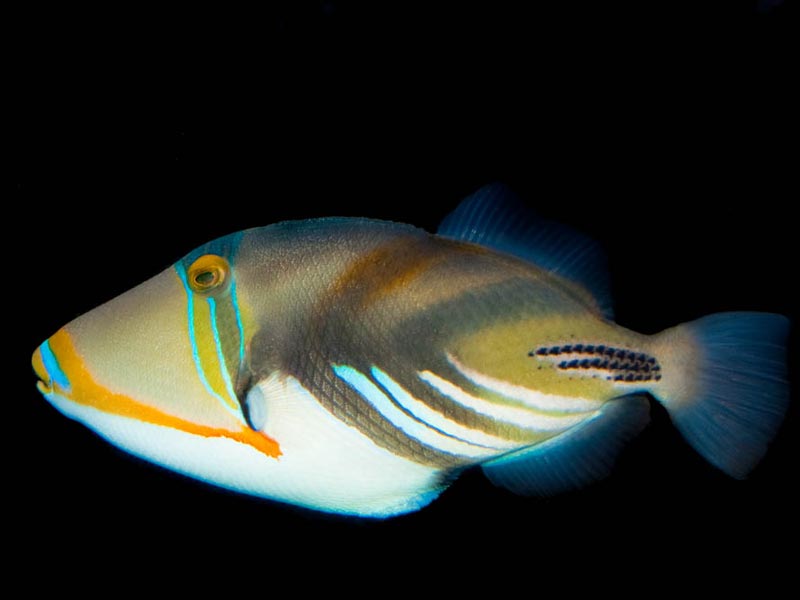Picasso Triggerfish
humuhumunukunukuapua'a
Rhinecanthus aculeatus
Triggerfish gets their name from the unique arrangement of their two dorsal spines. The first spine is thick and strong, and can be erected and locked into place internally with the shorter second spine. When in danger, most of them will dive into a hole or crack and raise their spine. This make it very difficult to remove them. The Hawaiian name "humuhumu" means "to stitch pieces together," which may refer to the geometric patterns on some species.
Their jaws and mouths are small but strong, which they use to feed on crustaceans, echinoderms, coral or almost anything. Many triggerfish are plankton eaters. They have tough skin, and their eyes sit far back on their body. All triggerfish swim by rippling their soft dorsal and anal fins, which allows them to move backward and forward. This helps them maneuver in and out of small spaces. There are 10 species found in Hawaiian waters.
The scientific name of the Picasso Triggerfish is based on its colorful lines and geometrically arranged patterns. The position of its eyes, high and about one third of the way down the body, allows the Picasso Triggerfish to attack long-spined sea urchins. It is commonly found on shallow reef flats, but it is hard to approach or photograph. It was voted the Hawaiʻi state Fish in 1984. The Hawaiian name means "nose like a pig", and it grunts like a pig when pulled from the water!
